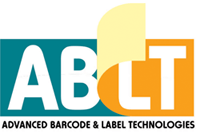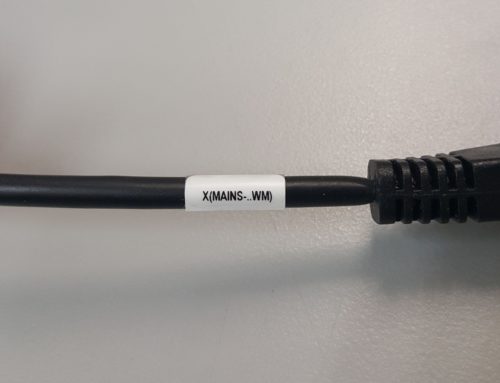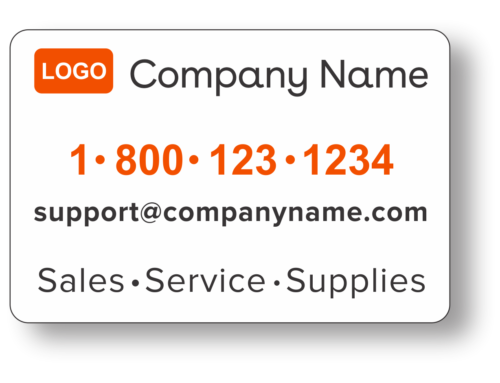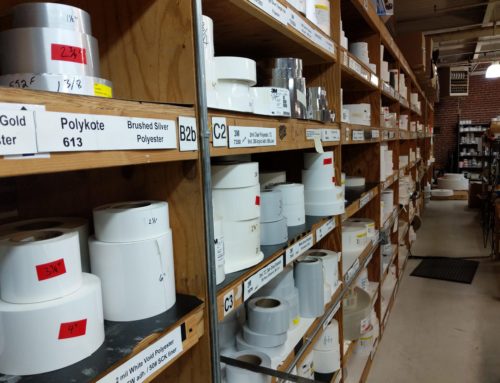Confession – I enjoy walking the aisles of specialty Health & Beauty stores looking at labels.

The Best Label for Your Product: Label Design Questions Answered
I cannot help it; I love to see beautiful well-designed labels, also I like seeing the really bad labels almost as much. When I see less than desirable labels, I consider what might have gone wrong and what could have been done differently.
This got me to start thinking that maybe if the company who put the time and money into producing those labels had some guidelines, their labeling might have turned out much differently.

Bottle Designs
From our point of view the package should determine what type of label you use and then the design and artwork should integrate with the package being used. If you start with a material that works with your packaging and is available to your printer, you will significantly lower your chance of being disappointed down the road.
To begin, start by asking yourself, what are the properties of the package, bottle, tube or container that could affect my label design?
Critical label design questions are:
- What is the container made of (plastic, paper, glass, etc.)? Will I need a special adhesive to stick to it?
- Is the container flexible? If so, do I need a label material that will not pucker when squeezed?
- How will my product affect the print or the label itself? Will my product react with the ink and end up smudging over time?
- Will my package get wet? For how long?
- Could my product wick the edges of a paper label even with a clear laminate over the print?
- For clear bottles with clear labels, what is the color of my product? How will that affect the final color of my design?
- Can I use a different container or package so that it matches a die size that my printer already has on hand to avoid tooling charges?
Containers

Example of 2oz sized containers
It helps to get your printer involved early on in the design process. I have seen many sizes and shapes of containers that accommodate the same amount of product. If you have a choice of container sizes, it is a good idea to ask your printer if they have tooling available. If they do, it could save you hundreds of dollars.
If your container is a jar or bottle and you need help coming up with the label length, I have created two videos explaining two methods for measuring label length.
Container Material

Label Lift or Flagging
Some containers have a small radius and are made of plastics that need a special adhesive to be sure they do not lift up (flag). This is especially important when you are using a clear lamination film over the print. Sometimes the tension of the laminate will want to flag if you do not have an adhesive that bonds quickly.
Container Shape

Curved bottle
We ask our customers to let us know if the container is not perfectly flat. If a container bumps out slightly it will pucker unless you compensate by rounding the sides slightly. Additionally. if it tapers the label will not wrap correctly. If you have a jar, bottle or tube and are not sure if it is tapered, lay it on its side and roll the container. If it rolls straight the container is flat. if the jar creates an arc it is not flat.
For containers that are not flat, it is best to send a sample of the container to the printer so that an exact die line drawing can be created to assist your artist when creating the art. If you are still unsure about the container either ask the manufacturer or send it in to be analyzed.
Clear Container Considerations

Process Color on Clear with Background
Clear containers are great for showing off your product, but they can also create challenges depending on how the labels are printed. Digital print is all the rage these days because of the speed of setup but most digital presses use process color, which means they are mixing 4 base inks (CMYK – Cyan, Magenta, Yellow & Black) to come up with a desired color.
This type of printing can produce stunning images but the ink that is laid down is very thin and on clear material it can be almost translucent. This also means that any color behind the print will become part of the color mix and may give you unwanted results or even make text unreadable. This can be disastrous when printing a UPC code on a clear bottle with a dark liquid inside.
One solution is to pre-print specific areas with a white spot and then print the process color or barcodes on top of the white background. Watch out for small type (print) which can be difficult to line up with a down line digital print systems.
Flexible or Squeezable Containers
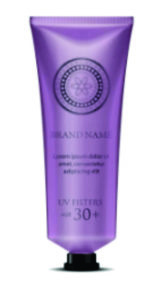
Squeeze Tube Label
Some containers are very flexible and are normally referred to as “Squeeze” bottles. Most label material is not meant to bend in this manner without puckering. For this reason, a line of squeezable films (FasClear) have been created to solve this issue. It is up to you to let your printer know ahead of time, so you do not not end up with wrinkled labels.
Product and Product Environments Effect on Label Choice and Design
Before you can decide on a label stock you need to ask yourself, “What’s my shelf life?” Additionally, you will want to ask yourself how important it is that the label continues to look good during use by your customer. Are there critical instructions that need to survive for a couple of years of use?
Other considerations are; what your product made of; will it attack the ink? How is it shipped; will it be rubbing against other containers; do you need extra protection to keep the print from rubbing off?
Normally beauty or health products do not contain chemicals that will affect a “go-to” label material like polypropylene, but it is still something to think about, some nail polish removers may be strong enough to damage a label made of a material like polypropylene. If you need a label material that stands up to more aggressive chemicals, consider using either a Polyester or Vinyl. (Choosing a label material)
Label Art and Design
So finally, you can start thinking about art and design for your label.
In my next Blog I will dive into some tips and tricks to consider when incorporating art and design elements into your new label. Which will include PMS vs process color, barcodes, foils and more.
I hope now you will take some time to think about the package when you are considering the design of your next label.
Call Us
If you have a label project that you need help with, please contact us and we will be happy to advise. Advanced Barcode & Label Technologies, Inc. has been in business since 1984 and has a proven history of partnering with clients to solve their complex label needs.
Need a quote? Have questions?
Talk to a label expert at 800-321-3653 or 404-671-3150
Or submit your specifications HERE
